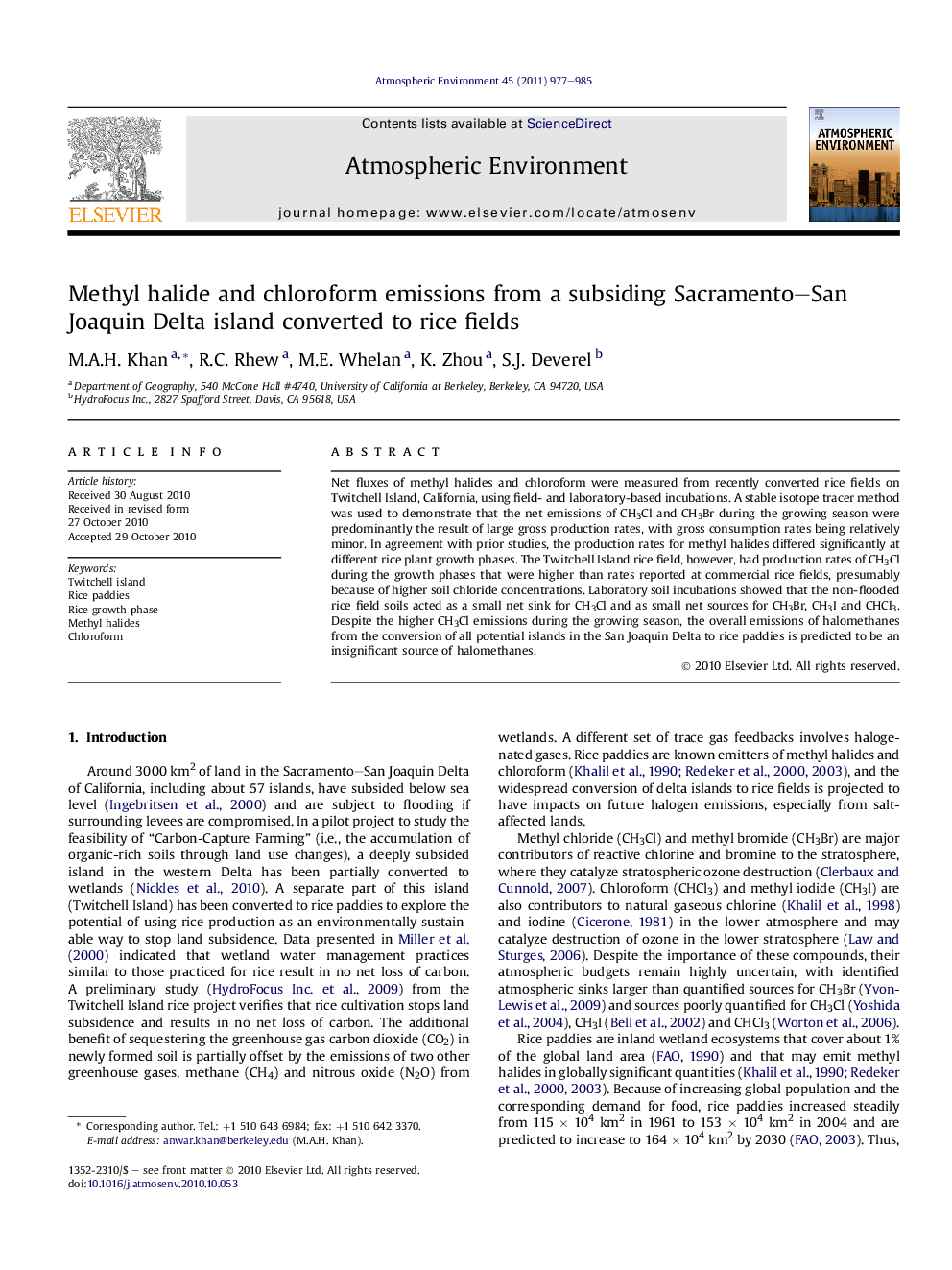| Article ID | Journal | Published Year | Pages | File Type |
|---|---|---|---|---|
| 4440250 | Atmospheric Environment | 2011 | 9 Pages |
Net fluxes of methyl halides and chloroform were measured from recently converted rice fields on Twitchell Island, California, using field- and laboratory-based incubations. A stable isotope tracer method was used to demonstrate that the net emissions of CH3Cl and CH3Br during the growing season were predominantly the result of large gross production rates, with gross consumption rates being relatively minor. In agreement with prior studies, the production rates for methyl halides differed significantly at different rice plant growth phases. The Twitchell Island rice field, however, had production rates of CH3Cl during the growth phases that were higher than rates reported at commercial rice fields, presumably because of higher soil chloride concentrations. Laboratory soil incubations showed that the non-flooded rice field soils acted as a small net sink for CH3Cl and as small net sources for CH3Br, CH3I and CHCl3. Despite the higher CH3Cl emissions during the growing season, the overall emissions of halomethanes from the conversion of all potential islands in the San Joaquin Delta to rice paddies is predicted to be an insignificant source of halomethanes.
Research highlights► The conversion of delta islands to rice paddies will increase halomethane emissions. ► Methyl chloride emissions are enhanced in these high salinity soils. ► Gross production rates are highly variable over course of season. ► This land use change has a negligible impact on the atmospheric halomethane source.
